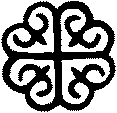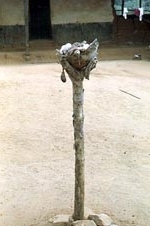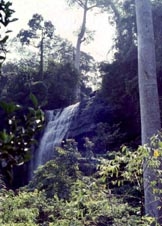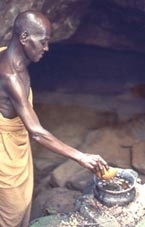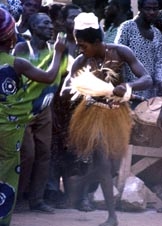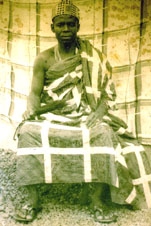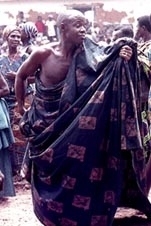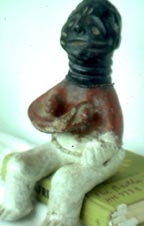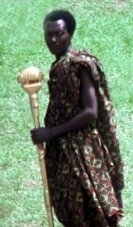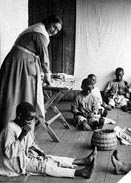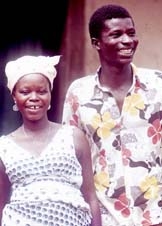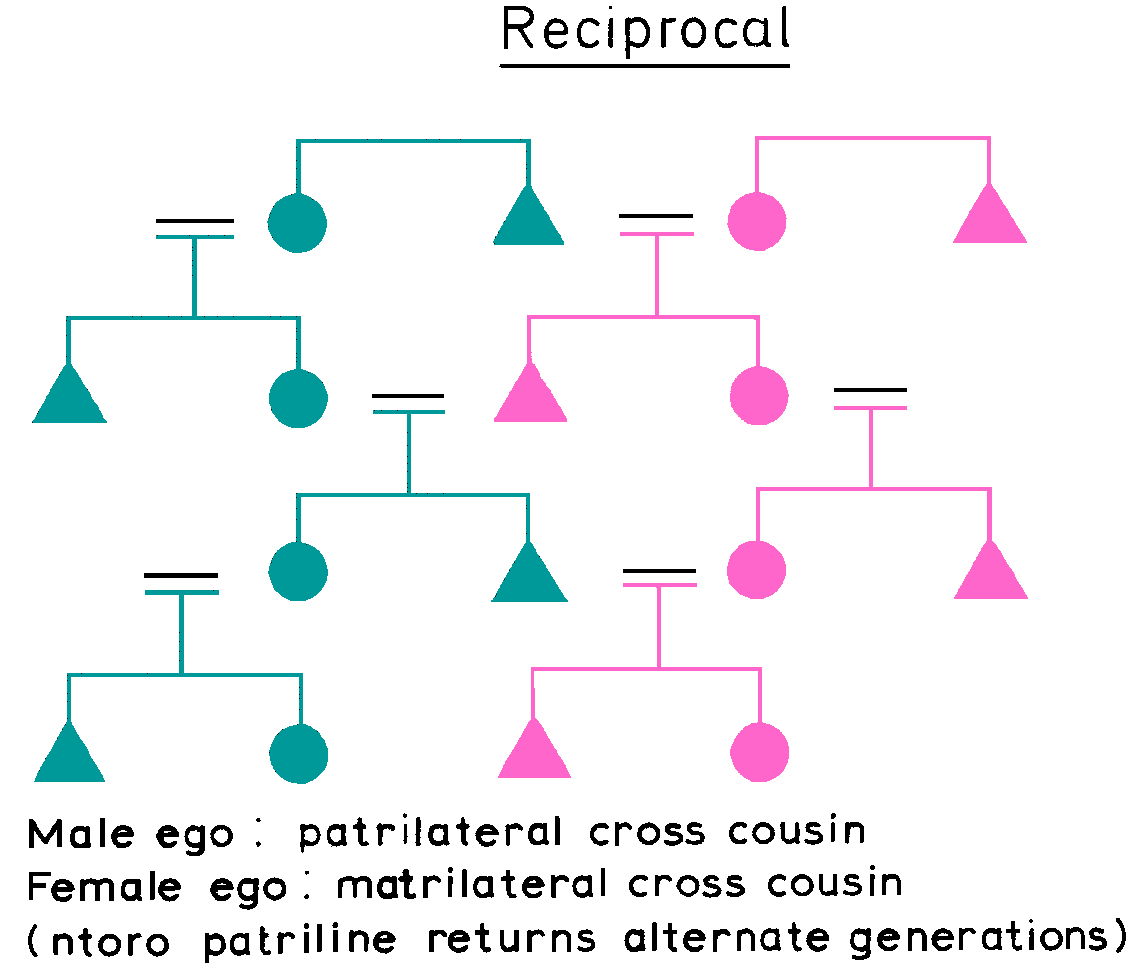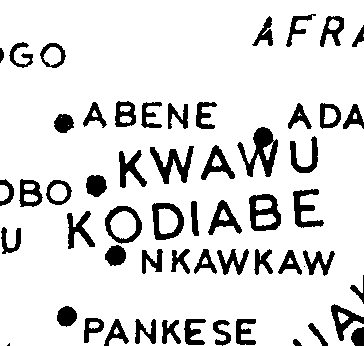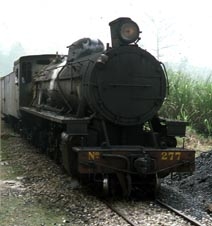 |
Africa: Journal of the International
African Institute..
Publisher: Edinburgh
University Press..
Volume 48,
Number 1 January 1978, pp 80-4.. |
|




Forty Days; The Akan Calendar
por Phil
Bartle, PhD
traduzido por x
.
Several attempts have been
made to understand the development if not the origin of Akan culture in
terms of the diffusion of (a) traits from the north which were taken south
with the expansion and disintegration of the great savannah trading empires
and the southward migration of Mande Dyula merchants and (b) traits which
were already present prior to that migration in a large area once populated
mainly by the Guan in the Ivory Coast, Ghana and Togo, and today populated
for the most part by Akan, Adanbe, and Ewe. The mixing of these cultural
traits and the point of origin for the Akan expansion appears to have taken
place along a trade route stretching from the Sahara to the Atlantic coast,
close to the site of Begho near Wenchie in the Bono Techiman state (Boahen
1966; Goody 1959, 1966, 1968; Wilks 1962).
The
social organization of the currently dominant Akan is based on matrilineal
descent, which may reflect matriliny among some of the migrants from the
north; in contrast, the social organization of the many remnant Guan communities
and the closely related Gonja is based on patrilineal descent. Akan
political structure is more complex than that of the Guan which it came
to dominate or replace. Akan society is based on hierarchies of federations
matrilineages, rather than on a loose collection of semi-independent patrilineages
which characterised the earlier Guan societies. In contrast to these
distinctions, of all the languages in the Kwa group the Guan languages
are most similar to Akan dialects; this may be evidence of a common origin
of at least some cultural elements. The worship by the Akan of what
were once Guan gods also leads one to suspect that Akan is a culture that
was once Guan but which has varied because of the fusion of some traits
with it. One institution indicating such fusion is the Akan calendar.
The
Akan comprise approximately two fifths of the total population of Ghana
(1960 Census of Ghana) and are also found in the Ivory Coast and Togo.
My present research has been among one Akan group, the Kwawu, and is focused
on one town, Obo. in the Eastern Region of Ghana. Until the sixteenth
century the area now called Kwawu was occupied by a loose collection of
Guan patrilineages holding limited allegiance to a leader Ataara Firam,
whose capital was Gyaneboafo in the Afram Plains. The disturbance
and expansion of Akan matrilineal culture south of Bono Techiman in the
Adanse and Denkyira areas resulted in numerous groups of Akan migrating
to Kwawu. Eventually they became more populous and, having an efficient
military organization, they defeated the Guan leaders but kept the wives,
slaves and children; they also retained the belief in their gods, and their
religious artefacts as trophies,
The
traits from different origins which constitute the particular mixture that
is Akan culture may generally be categorized into patrilineal and matrilineal
elements. As Fortes has pointed out, the Akan social organization
is not based on a double descent system. The duality of Akan society
is enacted in the individual. As Fortes wrote, '...every actor ...
is at one and the same time a matri-person and a patri-person, and the
attributes that go with these two aspects of his status are mutually exclusive
and complementary' (Fortes 1963). The dominant matrilineal inheritance
of economic and political elements of office and property is based
on the abusua (matrilineage) and symbolized by mogya (blood
which are the structural bases for [p.81] the formation and operation of
exogamous matrilineal descent groups called nton. The subordinate
patrilineal inheritance of of spiritual and psychological elements of character
and morals (sunsum) is based on the ntoro (patrilineal line)
and symbolized by semen (ahoaba) and related to the spiritual beings
of animated natural objects (abosom). Corresponding colour
symbolism consists red and white for the respective female-male, corpus-spiritual,
blood-semen categories. Matrilineal dominance is also seen in the
fact that the chief (being continually possessed by his ancestors) has
a higher status than the priests and priestesses (even when they are on
occasion possessed by their tutelary spirits). Homage is often made
publicly in connection with rites held on the various 'bad days,' dabone.
The coexistence of matrilineal elements in political, social, and economic
life side-by-side with patrilineal elements in ritual, spiritual and psychological
life is evidence of a fusion of traits originating from different areas.
The forty-two day cycle in which the dabone occur may itself be,
like much of Akan culture, a result of the synthesis of elements having
separate origins.
The
Akan calendar is based on what the Akan call 'forty days,' adaduanan
(da=day, aduanan=forty). Close examination of the cycle
reveals forty-two different days, with the forty-third being the same as
the first. Within the adaduanan cycle are found four special
days collectively called dabone (bone=evil). Two of
these 'bad' days are called adae (perhaps deriving from da=sleep
and eye=well, implying that the ancestors should lie comfortably),
and are closely associated with politico-ritual symbols of gerontocracy
sanctified or sanctioned by ancestor worship. No funerals may be
held and no news of death may reach the ears of a chief (the living shrine
of his ancestors) while libations of alcohol and offerings of food are
made to the blackened stools (the permanent physical shrines of those ancestors)
on an adae. The other two of those 'bad' days are Fodwo
and Fofi, which are closely associated with medico religious symbols
or purification and the intervention of anthropomorphic spirits inhabiting
natural objects such as rivers and caves. These four 'holidays' are
not complete vacations from all labour. No farming may be carried
out on any dabone but work per se is not banned. Hunting
and gathering are usually permitted and the people may go to their farms
to carry home firewood or food reaped the previous day, so long as no weeding
of farms is done. Often communal labour is performed on those dabone
which are not filled with ritual and ceremonial activities.
The
composition or construction of the adaduanan cycle appears to be
based on an older six-day week, still extant in some northern Guan communities
such as the Nchumuru (Lumsden 1973), on which is superimposed a seven day
week which may have been brought south with itinerant traders from the
savannah.
The
days of the six day week are:
| 1. |
Fo |
Council day (passing
sentence; judgement day |
| 2. |
Nwuna.. |
Sleep (death) day; funerals
day; covered day. |
| 3. |
Nkyi |
Behind (hate-taboo) day;
destroyed day. |
| 4. |
Kuru |
Town (ie political) day;
royal day. |
| 5. |
Kwa |
For nothing ('just like
that', free, unrestrained) day, servant day... |
| 6. |
Mono |
Fresh (starting) day. |
..
The
days of the seven day week are:
| 1. |
Monday |
Dwo |
Quiet (peace) day; calm |
| 2. |
Tuesday |
Bena |
Birthday of ocean; heat,
boiling, cooking. |
| 3. |
Wednesday |
Wukuo.. |
Birthday of Spider (reverse
or mortal version of God)... |
| 4. |
Thursday |
Ya |
Birthday of Earth (a
woman); power. |
| 5. |
Friday |
Afi |
Fertility (in some Fante
States, birthday of Earth). |
| 6. |
Saturday |
Mene |
Birthday of Supreme or
Sky God (a man); respected, ancient... |
| 7. |
Sunday |
Kwasi |
Under Day (awiase=
under the sun); universe, everything. |
[p.82]
The
six-day week is referred to as nanson (literally seven days), and
the seven-day week is referred to as nawotwe (literally eight days).
These terms reflect the lack of zero in the numbering systems; the last
day and the first day are both included when counting the days of a week.
When
the six-day week is counted side-by-side with the seven-day week it takes
a total of forty-two days to reach all combinations. The result of
these combinations is shown below; the four dabone are in italics:
| 1. |
Fo-Dwo |
8. |
Nwuna-Dwo |
15. |
Nkyi-Dwo |
| 2. |
Nwuna-Bena |
9. |
Nkyi-Bena |
16. |
Kuru-Bena |
| 3. |
Nkyi-Wukuo |
10. |
Kuru-Wukuo |
17. |
Kwa-Wukuo |
| 4. |
Kuru-Ya |
11. |
Kwa-Ya |
18. |
Mono-Ya |
| 5. |
Kwa-Afi |
12. |
Mono-Afi |
19. |
Fo-Fi |
| 6. |
Mono-Mene |
13. |
Fo-Mene |
20. |
Nwuna-Mene |
| 7. |
Fo-Kwasi |
14. |
Nwuna-Kwasi............... |
21. |
Nkyi-Kwasi |
|
.....
..... |
|
|
|
|
| 22. |
Kuru-Dwo |
29. |
Kwa-Dwo |
36. |
Mono-Dwo |
| 23. |
Kwa-Bena |
30. |
Mono-Bena |
37. |
Fo-Bena |
| 24. |
Mono-Wukuo............... |
31. |
Fo-Wukuo |
38. |
Nwuna-Wukuo..... |
| 25. |
Fo-Ya |
32. |
Nwuna-Ya |
39. |
Nkyi-Ya |
| 26. |
Nwuna-Afi |
33. |
Nkyi-Afi |
40. |
Kuru-Afi |
| 27. |
Nkyi-Mene |
34. |
Kuru-Mene |
41. |
Kwa-Mene |
| 28. |
Kuru-Kwasi |
35, |
Kwa-Kwasi |
42. |
Mono-Kwasi |
The
forty-two day cycle shown here, as recorded in Kwawu, is the same as that
recorded by Rattray (1923;115) for the Brong (ie Bono Techiman) a state
Northwest of the Asante. Rattray (1923;114) notes that the Asante
sent messengers to Brong when in doubt when to hold any festival, for the
Brong were 'keepers of the King's calendar.' When Kuru (from
kurow=town)
of the six day week coincides with a Wednesday of the seven-day week (on
Kuru-Wukuo),
or
with a Sunday of the seven-day week (on Kuru-Kwasi), the two dabone
most closely related to stool rites, Awukudae and Akwasidae
(Wuko-Adae and Kwasi-Adae) are celebrated. When Fo
of the six day week coincides with a Monday or Friday, the two dabone
most closely related to tutelary spirits are celebrated (Fodwo and
Fofi). The forty-two day cycle may be thought to begin on Fodwo
and the other three dabone follow in nine day intervals: Awukudae
on the tenth day, Fofi on the nineteenth day, and Akwasidae
on the twenty-eighth day. It takes a further fourteen days to complete
the adaduanan. The adae is not celebrated every twenty-one
days as asserted by Busia (1951:28).
Apart
from the four standard dabone, some gods may celebrate other days
of the cycle. For example, the god Burukung, which was the
senior god of the Guan (Goody 1959; Field 1962; Wilks 1961) on the Kwawu
Afram Plains, and now the chief of the Kwawu abosom (tutelary spirits),
since the sixteenth century Akan take-over of Kwawu (the principle shrine
being a large, striking inselberg on the northern slopes of the Kwawu escarpment),
celebrates the principal rites on Kwadwo, the Monday following Akwasidae.
The cult of Akonnedi, god of Late (Larteh) in Akwapim, which has branches
in Kwawu, observes its most frequent public rites on [p.83] Nkyi-Mene
or Memenada Adapa, the day prior to Akwasidae (day 27 on
the above list). Various other gods in Kwawu are honoured on various
other days in the forty-two day cycle.
The
adaduanan
do not precisely comprise the annual calendar, because nine cycles total
378 days instead of 365 1/4. Eight cycles yield only 336 days.
Annually celebrated rites of the different Akan groups, such as the first
yam eating festival, Odwira (ablution) or Afahye (public festival),
are therefore celebrated each year on different days of the year.
The priests of the various gods, in consultation with the various gods
and ancestors, determine which adaduanan cycle to choose for the
annual rites, usually depending upon the ripening of the crops. Any
series of annual rites is observed on the same days of the adaduanan
each year, although not on the same days of the year as reckoned by the
Roman calendar.
The
various adaduanan cycles within the year are given a number of appellations,
which are not the same from place to place, and of course never quite the
same from year to year, since there are less than nine and more than eight
cycles in any one year. Opepon (Ope=harmatan, dry season,
pon=supreme)
for example, more or less corresponds to the adaduanan which appears
about January-February in the middle of the dry season. Every three
years or so, one of the nine named adaduanan is omitted from the
year because of the extra thirteen days gained when observing nine cycles
a year. The names of the adaduanan are therefore flexible
and vary over time and cline.
Today
some of the names for the adaduanan cycles have been arbitrarily
applied to the Roman (Christian) calendar of twelve months by some Akan
scholars, although there is no traditional basis for such a translation.
For example, Opepon is now used for the Akan word for January even
though in the traditional Akan calendar there is no concept exactly corresponding
to the Roman month of of January (Janus the god facing the past
and future). The beginning and end of each Akan year tends to be
the various yam festivals celebrated around August or September.
The
lunar cycle and twenty-eight day month are not carefully observed, except
by the coastal Akan who are interested in tides as they affect fishing.
Still, the month is known as bosome; it consists of twenty-eight
days rather than the thirty or thirty-one days of the Roman calendar.
Three bosome make two adaduanan. Since the arrival
of Swiss missionaries from Basel in the early nineteenth century, Christian
Akan scholars have tended to 'Akanize' the Roman calendar rather than observe,
analyse and explain the Akan calendar based on adaduanan.
It
is quite easy to calculate the Akan calendar from the Roman calendar once
a few keys are known. Understandably there is no equivalent in English
to the six day week. The seven day week of the English and Akan calendars
are, however, equivalent, with the suffix -da (day) added to the
names of the days in the above list (Sunday is Kwasida, saturday is Memenada,
and so on). Every second year or so Easter occurs on an Akwasidae.
In 1978 there are nine Akwasidae, celebrated on 8 January, 19 February,
2 March, 14 May, 25 June, 30 July, 6 August, 17 September, 29 October and
10 December, that is every sixth Sunday. The first four dabone
of 1977 were Akwasidae (8 January), Fodwo (23 January), Awukudae
(1 February), and Fofi (10 February). Other dabone
may be calculated infinitely from these adding or subtracting six-week
intervals.
The
synthesis of a six-day week and a seven-day week, forming the forty-two
day adaduanan cycle may be added to numerous other items of evidence
to support a theory of the origins and development of Akan culture which
suggests that it is based on cultural diffusion and a compromise of observances
having diverse origins.
References
Boahen, K. Adu
1966 'The origins of the Akan,' Ghana Notes and Queries 9:3-10.
Busia, K. A.
1951 The Position of the Chief in the Modern Political System
of Ashanti.
Gold Coast Government, reprinted for Oxford University Press by Cass, London.
Field, M. J.
1962 'A further Note on Burukung,' Ghana Notes and Queries
1:27.
Fortes, M.
1963 'The Submerged Descent Line in Ashanti,' in I. Shapira
(ed.)
Studies
in Kinship and Marriage. Royal Anthropological Institute, London
Goody, J. R.
J.R. 1959 'Ethno-history and the Akan of Ghana,'
Africa
29(1): 67-81.
––––––––
1963 'Ethnological Notes on the Distribution of Guan Languages,'
Journal
of African Languages 2(3).
––––––––
1966 'The Akan and the North,' Ghana Notes and Queries
9: 18-24.
––––––––
1968 'The Myth of a State.' Journal of Modern African Studies
6(4): 461-73.
Lumsden, D. P.
1973 Nchumuru Social Organization and the Impact of the Volta
River Project
Unpublished PhD Thesis, University of Cambridge.
Rattray, R. S.
1923 Ashanti. Clarendon Press, Oxford.
Wilks, I.
1961 'Buruking,' Ghana Notes and
Queries 1(1): 11-12.
––––––––
1963 'A Medieval Trade Route from the Niger to the Gulf of
Guinea,
Journal
of African History 3(2).
Résumé
Quarante Jours le Calendrier
Akan
.
Les Akan du Ghana et
de la Côte d’Ivoire ont semble-t-il en commun un certain nombre de traits
distinctifs d’origine multiple, et cette synthèse est mise en évidence
par leur calendrier. Celui-ci a pour base un cycle de 42 jours résultant
de l’existence d’une semaine de six jours (cette dernière étant une
survivance de la présence antérieure Guan dans cette zone) et d’une
semaine de sept jours (qui, elle, semble provenir du nord), six fois sept
faisant quarante deux. On dénombre, dans ce cycle des 42 jours quatre
jours ‘maléfiques’ au cours desquels il n’y a ni activités agricoles
ni inhumations, ces journées étant marquees par des cérémonies et des
travaux effectués en commun. Chacune de ces journées de la semaine
de six jours ainsi que de celle de sept jours possède ses caractéristiques
propres et les personnes nées un certain jour ont toutes en commun certaines
de ces caractéristiques. Les nouveaux-nés prennent leur nom d’aprés
la semaine de sept jours qui est celle qui prédomine et qui est mieux
connue que celle de six jours. Les données rapportées dans le présent
article sont le résultat d’une recherche effectuée chez les Kwawu;
les coutumes peuvent varier d’une zone Akan à une autre, mais elles
ont toutes le même adaduanan (‘quarante jours’).
.
Resumido
Cuarenta Días; el Calendario
Akan
.
Parece que los akan de
Ghana y Costa de Marfil tienen en común un cierto número de rasgos distintivos
de origen múltiple, y esta síntesis se evidencia en su calendario. Este
tiene como base un ciclo de 42 días, resultante de la existencia de una
semana de seis días (cuyo origen se remonta a la presencia en el pasado
de los guan en esta zona), y de una semana de siete días (que parece provenir
del norte): seis por siete son cuarenta y dos. En este ciclo de 42 días
se cuentan cuatro días «maléficos», a lo largo de los cuales no hay
ni actividades agrícolas ni inhumaciones, y están dedicados a ceremonias
y trabajos efectuados en común. Cada uno de los días de la semana de
seis días posee características propias, y todas las personas nacidas
un cierto día tienen algunas de estas características en común. Los
recién nacidos toman su nombre de la semana de siete días, que es la
que predomina y se conoce mejor que la de seis días. Los datos aportados
en este artículo son el resultado de una investigación efectuada en el
territorio kwawu: las costumbres pueden variar de una zona akan a otra,
pero todas ellas tienen los mismos adaduadan («cuarenta días»). Traducción
deMª Lourdes
Sada.
Kurzfassung
Vierzig Tage; der Akan-Kalender
.
Die Akan Ghanas und die
Elfenbeinküste scheinen über diverse ähnliche Merkmale zu verfügen.
Eine dieser Ähnlichkeiten ist der 42-Tage-Zyklus, der aus dem Zusammenschluss
einer Sechs-Tage-Woche (von einer früheren Gruppe, den Guan, begründet)
und einer Sieben-Tage-Woche (die ursprünglich von der Sahara zu kommen
scheint) herrührt. 6 mal 7 ergibt 42. In diesem 42-Tage-Zyklus unterscheidet
man vier „schlechte Tage“. Während dieser Zeit darf niemand
Landwirtschaft betreiben oder eine Beerdigung durchführen. Jedem Tag dieses
Zyklusses werden bestimmte Charakteristika zugeordnet. Menschen,
die am selben Tag geboren sind, wird nachgesagt, dass sie über gemeinsame
Eigenschaften verfügen. Wenn ein Kind geboren wird, erhält er/sie einen
Seelennamen der sich an der Sieben-Tage-Woche orientiert, da diese diejenige
ist, die von den beiden verschiedenen Wochenzyklen am weitesten bekannt
ist. Die Informationen entstammen einer Recherche über die Kwawu,
die, wie alle anderen der Akan, den Adaduanan Zyklus (40 Tage) anerkennen.
Uebersetzt von Christine Voigt.
.
Abstract
Forty Days; the Akan
Calendar
.
The Akan of Ghana and
Ivory Coast appear to have several traits of origin in common. Here we
look at one such feature, the 42 day cycle which resulted from the fusion
of a six day week (originating in an earlier group, the Guan) and a seven
day week (which appears to have come across the Sahara) (six times seven
making 42). In this 42 day cycle, there are four “bad days” during
which no one may farm or conduct a funeral. Each day on the cycle
has specific characteristics, and people born on the same day are said
to share some common characteristics. When a child is born, s/he
is given a soul name based on the seven day week, which is the better known
of the two weekly cycles. The data from which this is taken are based
on research among the Kwawu, who, in common with all other Akan, recognise
the adaduanan (forty days) cycle.
Related Links:

––»«––
.
.


